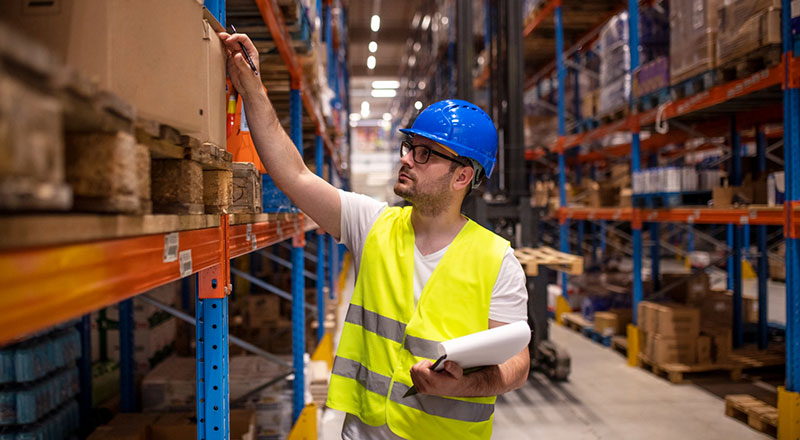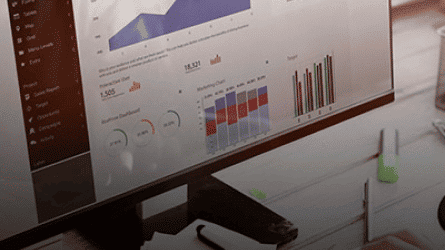Data science can predict the future
The car you drive is the product of one of the most complex logistical endeavours ever attempted. Tens of thousands of components and raw materials criss-cross the world to get to the right place at the right time for each vehicle to roll off the production line.
Holding spare stock costs money, so manufacturers prefer to rely on steady supplies of parts that are delivered exactly when they are needed. But the “just-in-time” model that underpins the automobile industry is vulnerable. Unexpected delays can have far-reaching and costly knock-on effects all the way along the supply chain.
The old saying that “for the want of a nail, a kingdom was lost” resonates in an industry where the want of a container of ball bearings can do serious damage to an automaker’s bottom line. But what if the company shipping that container knew that the usually reliable route would take too long this time, and automatically switched it to a quicker alternative?
Any tool that can predict when and where delays might happen, and work out ways to avoid them, will be extremely valuable. People cannot take into account every single one of the extraordinary number of variables affecting a sophisticated supply chain. Data science can.

What is data science?
Data science involves analyzing information from the past and present, and using it to predict the future. And it isn’t new. Individuals and companies have long used ledgers, spreadsheets and computers to identify trends and spot potential problems and opportunities.
But the digital revolution is allowing data science to grow beyond anything seen before. Technologies such as the Internet of Things (IoT) are providing unprecedented quantities of data and track goods in real time as they move along the supply chain. Blockchain allows companies to trust that the data they are using (for example that a product has left a warehouse) is genuine and secure. Robotic Process Automation, or RPA, is eliminating errors from the data, guaranteeing its accuracy.
The result is data that gives a very detailed picture of the world. Using machine learning, computers can sift the information, looking for patterns. When a pattern is repeated often enough, it can be used as a guide to what is likely to happen in the future.
Why does it matter for supply chain?
Uncertainty is damaging to every part of a supply chain. But for shipping companies themselves it can be fatal. Competitive pricing depends on correct estimates of the costs incurred. If you estimate too high, you risk being outbid. If you estimate too low, you will lose money on the delivery.
Reputation is extremely important to shipping companies. Customers rely on the promises we make in order to run their businesses. If those promises are broken, the crucial bond of trust is weakened. As supply chains become ever more sophisticated, data science will be essential for accurate pricing and ensuring that the promises made will be kept.
Although cost and speed are the decisive factors in many deliveries, other considerations are becoming more important too. Political and economic volatility make the security of a supply chain ever more important. An increased awareness of the environmental cost of transporting goods means that emissions and carbon footprint are becoming key factors in deciding routes.
Data science allows shipping companies to account for new pieces of information, such as a change in a security situation or new environmental regulation, much more quickly. The same reaction speed also means new markets and routes can be evaluated sooner.
Opportunities…
Knowing what the optimal route will be is one thing. Acting on that information is another. This is where artificial intelligence (AI) can play a role.
AI is the use of computers to react to data in the same way a human would. If a warehouse manager knows that a spilled load has caused a logjam at the site entrance, he might want to alert incoming trucks to postpone their collection, and warn the next link in the chain to expect a delay. But will he have the time to call each driver while he’s sorting out the spill?
AI systems can be programmed to immediately alert all the relevant links in the chain. A truck that was due to collect from the warehouse can be diverted to another delivery until the site has been cleared. The aircraft that would be waiting for its consignment can be loaded with an alternative cargo.
AI could also work out a new route for the delayed consignment that falls within tailored parameters. When does the delivery actually need to be at its final destination? Is it a perishable good that means speed is paramount? Or is a low carbon cost the most important factor?
The efficiency dividend of this kind of AI could be enormous. Avoiding bottlenecks in real time will ultimately drive down the cost, improve the speed, and mitigate the environmental implications of the entire logistics and supply industry.

…and challenges
To make the kind of AI described above possible demands a high level of integration and interoperability. Data from multiple sources needs to be stored in a way that is accessible to all the relevant parties. This requires common standards and procedures so that different systems can effectively talk to each other.
The question of data ownership is controversial, and has not yet been resolved. Who, if anyone, can own the data? Who decides who can use it, and how? For example, take the case of tracking a shirt with an embedded IoT device from factory to retailer. Is the tracking data owned by the owner of the shirt? When does ownership of the shirt switch? Or does the data belong to the shipping company that is actually doing the tracking? Can the shipper use it to create proprietary business models? What happens to the data if the factory switches shipping companies? And whose rules apply in trade routes that span multiple countries?
These questions can only be answered as part of a broader global discussion. In the meantime, companies should ensure that they are compliant with data regulations that apply to any country jurisdiction they do business with. The EU’s GDPR laws are increasingly being seen as a gold standard that other countries will follow.
The final challenge is how to ensure AI responds in the right way. It is possible for computers to find patterns in data that are circumstantial, and have no predictive value at all. That means AI systems need to be monitored and evaluated.
Where now?
Data science is already playing a leading role in designing, managing and monitoring supply chains for bigger companies. Cloud computing is quickly making the technology cheaper and accessible to all. Shipping companies like Agility are already integrating advanced machine learning and AI into end-to-end services that are affordable for any customer, for example with our Shipa brand.
The data science revolution isn’t coming – it’s here already, and everyone can take part.
What we are learning
The greatest impact we’re seeing so far is in risk management. Until now, shippers have been using data to manage their “exceptions” – those instances when something in the supply chain goes wrong.
The next frontier is predictive analytics that allows shippers to address problems before they occur. That includes demand forecasting based on social media trends, consumption figures and other data to remove spikes and troughs in the supply chain and eliminate inventory bottlenecks.
Reaping the rewards of Robotic Process Automation
Two ships carrying identical cargoes have just docked at a busy port.
One shipment experiences the usual delays and frustrations. A customs declaration for one container mistakenly refers to 1000 units rather than 100. One item of cargo has the wrong safety certificate. Some of the delivery addresses are incorrect, leading to confusion with the truck dispatchers. One consignment has the wrong parts because somebody misread a decimal place.
The mistakes are eventually sorted out, but it takes time and money.
The second shipment clears the port with no errors. All the information is 100% accurate. Why? The supply chain has been managed with robotic process automation.
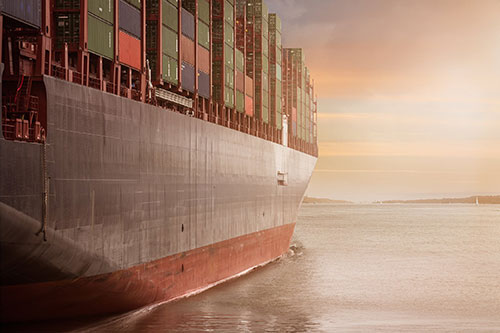
What is robotic process automation?
Robotic process automation, or RPA, does not involve robots as they exist in the popular imagination.
RPA is the use of software to carry out repetitive tasks that we do on computers. Increasingly, it is having a dramatic effect on costs, productivity, and accuracy.
The supply chain involves a vast amount of paperwork and manually entered data – emails and digital forms. Purchase orders, invoices, cargo manifests, customs declarations, delivery dockets, warehouse inventories – all necessary documents to ensure that the right package gets to the right place at the right time, in line with all relevant regulations.
Inputting data and generating the right documents is time-consuming, monotonous work. When people do the same task again and again, they inevitably make mistakes – because they are tired, bored, overworked, or unmotivated.
But machines don’t make those mistakes. Rules-based, repetitive work is ideal for a computer. It can carry out the same task 24 hours a day, doing exactly what it has been programmed to do without errors.
Why does it matter?
Businesses are under constant pressure to reduce overhead. Hiring people and training them on complex IT systems is expensive. When the work those people are doing is largely drudgery, it doesn’t just lead to errors: It is a waste of a valuable resource – the skills, talent and experience of that worker.
RPA can free employees to do more of the things that humans excel at and computers don’t: problem solving, reacting to unexpected events, creative thinking, and dealing with other people. Individual employees are not only more productive, but they experience greater job satisfaction, and are less likely to leave for other jobs.
Studies have shown that robotic process automation can make back-office operations up to ten times faster, and cut average costs by 37%.
Opportunities…
Many back-office jobs have been outsourced to external providers in an effort to minimize costs. But the efficiency savings of this trend are tailing off, partly as a result of growing wages in many of the countries where jobs have been transferred. Outsourcing the work also involves reputational risk: mistakes and poor-quality service by external providers and third-party contractors can have a damaging effect on a company’s brand.
RPA gives companies the opportunity to bring much of this work back in house. Improved customer service can pay huge dividends in supply chains where trust is a significant factor in deciding who to work with.
As the accuracy of data improves, more can be done with it. Combining RPA with data provided by technologies such as the Internet of Things (IoT) will allow companies to build highly accurate models of supply chains. Gaps in the market, and potential problems, can be identified, Companies which make the right use of this data will have significant competitive advantages.

…and challenges
Designing an automated process for a particular task using a particular interface is relatively simple. But when different IT systems and interfaces are used, making sure that one program can understand the data provided by another is more complicated.
Even within individual companies, IT systems can vary widely. The warehouse may be run on an entirely different operating system from the accounts department. In a complex supply chain with multiple stakeholders, this problem is amplified dramatically.
For RPA to achieve its full potential, systems need to be integrated enough to allow data to be transferred seamlessly from one end of the chain to another. This means companies must consider what systems their partners use. Compatibility will be a key factor in any decisions about upgrading systems to avoid expensive mistakes.
Robotic processes will do exactly what they are told to do with the data they are given. Although more sophisticated systems can spot anomalous information, there will always be a need for people to monitor and improve processes to ensure the desired outcome.
Where now?
RPA is already being used across the industry. But in many organizations, it is deployed in silos. Many companies have already automated their invoicing, and also their delivery operations. But most have done so separately – the two systems don’t work with each other.
Agility is looking to integrate these processes all the way along the supply chain. End-to-end services like our Shipa brand are designed to make logistics easier and cheaper. This kind of business is ideal for RPA – ensuring the right goods get to the right place with the minimum of fuss.
What we are learning
At multiple points in the supply chain, the movement of freight is still reliant on manual data entry. But even limited deployment of RPA is exposing how those points so often become points of failure.
The most rapid adoption of RPA to date involves forwarders and carriers using it to automate event tracking and to bridge gaps between systems that require data transfer. Watch for faster, broader take up as the heavy cost of continued reliance on manual entry becomes clearer.
How the Internet of Things will revolutionize your supply chain
A batch of vaccines leaves a pharmaceutical company bound for another continent. Each of the thousands of tiny vials has the potential to save a child’s life. But only if the contents of the container are kept chilled throughout the long journey.
From the moment it is driven away from the loading dock, the batch is being tracked. A chip is recording its location, and whether it is being kept upright. Crucially, the chip is also monitoring the temperature of the vaccines. From refrigerated lorries, cargo holds and warehouses, the chip feeds this information back to both the manufacturer and the medical center that has placed the order. Doctors and medical staff can see where the vaccines are and when they will arrive, certain they are in perfect condition. They can plan an immunization campaign that will keep a village free from a deadly disease for a generation.
All this is possible thanks to the Internet of Things.
What is the Internet of Things?
When we hear about the Internet of Things (IoT), we usually think of smart household appliances that can communicate with a network – for example fridges that keep track of their contents.
But IoT devices can be attached to almost anything. As 5G technology becomes more widespread, tiny chips are able to relay a huge amount of data. These chips could be sewn into the collar of a shirt, embedded to a table leg, or attached to the cardboard packaging of a coffee mug. Anything that you want to track can be tracked.
They can report location and state awareness (temperature, humidity, tilt, etc). The data can be accessed from anywhere in the world in real time – alerting anyone who needs to know about delays, detours, unexpected stops and accidents.
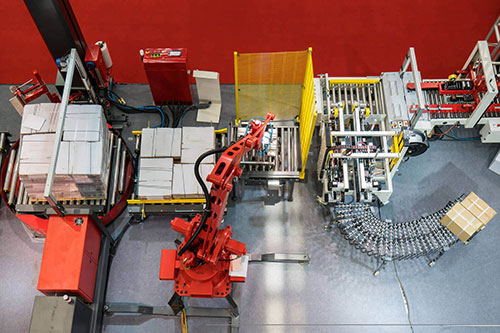
Why does the IoT matter for supply chain?
For the supply and logistics industry, knowing where the goods are and what state they are in is vital. Huge amounts of time and money are spent logging and tracking consignments, with the reputation of the shipper on the line every time a delivery does wrong. Because supply chains typically involve multiple providers and subcontractors, trust is essential.
IoT devices allow complete visibility. A shipping company will be able to keep track of every stage of the process. There will be no opportunity for products to go astray, be tampered with, or even be replaced by counterfeit goods. Shippers can guarantee quality and security, and keep all stakeholders informed about the progress of the delivery at all times.
Opportunities…
The potential benefits of IoT are enormous.
Data from IoT devices can be encrypted and shared using blockchain, so that customers and suppliers have a real-time record of a transaction as it progresses. This will facilitate instant payments and reduce the need for lines of credit.
Inventory management will be transformed. There is no need for time-consuming and costly stocktakes when there is a guaranteed accurate and reliable record of every item entering and leaving a warehouse.
The data provided by millions of objects travelling all over the world can be analyzed to identify optimal routes. Delays and bottlenecks can be predicted. And different options can then be tailored to each customer depending on priorities: cost, speed, security, and carbon footprint.
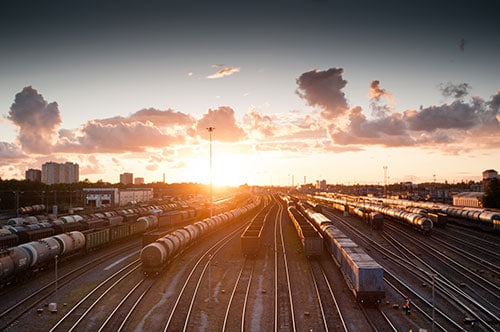
…and challenges
There are two major considerations that will affect IoT in the supply chain: disposability and privacy.
For the former, the question is simple – what do you do with the IoT devices and chips when the item has been delivered?
Currently, most of the IoT devices being used for pilots and trials in the supply chain need to be returned to providers, which is expensive and time consuming. However, the cost of the individual devices and chips is falling rapidly. Discarding chips would create vast amounts of electronic waste and is not sustainable in the long run. Recycling schemes, whether run by transport companies themselves or third parties are likely to be an essential part of the business before long.
There are also privacy concerns about whether an item could continue to be tracked once it has been passed to the consumer. How do you know the chip in your TV or even shirt is no longer active? The industry will need to collaborate to establish safeguards and protocols that can win the trust of the public.
Where is the IoT now?
IoT technology is already being used to track deliveries.
Agility has operated successful pilots with several partners, that have proved the value and efficacy of the technology. We have overcome practical issues such as ensuring IoT devices can be used on commercial cargo aircraft.
There are also a number of companies that offer IoT tracking devices for individual deliveries, such as Roambee.
As 5G is rolled out worldwide, there will be no technical barriers to the widespread adoption of IoT as a standard. High value items, and those that need close temperature monitoring such as pharmaceuticals and fresh or frozen food, are naturally the most likely early adopters. But within a few years, anything that customers or suppliers decide they want to track, will be tracked.
What we are learning
The big lessons in trials with customers are, first, that IoT without a corresponding data strategy is only half the story. IoT expands the data points available to shippers, but without a contextual data science strategy, the data is of little use.
Another lesson is that there is a larger-than-anticipated degree of compliance – whether with governments and regulatory authorities or with transport providers such as airlines – that has to be factored in.
For shippers, the next step is demonstrating where they can extract value from the data. That means using it to generate predictive analysis that strengthens their supply chain.
When a shirt is shipped from China to a shop in Europe, it passes through a complicated and sometimes slow supply chain, involving many different parties, manual data entry and a stack of paper documents.
What’s more, the retailer needs to trust that the shirt is on its way, and usually needs to make payment before it arrives.
Now imagine that the shirt is embedded with an intelligent chip and can be tracked using distributive ledger technology.

As it leaves the factory, it sends a digital signal that it’s on its way. Since this data is recorded in the blockchain, it is secure, immutable and can be trusted by all parties – no one needs to double check or verify that the shirt is on its way.
The retailer can pay for the shirt with assurance that it’s in transit, and the sender can instantly verify that the right person is collecting or receiving the goods.
In short, it’s faster, cheaper and more efficient way to send an item around the world.
This is how blockchain could change the face of logistics: by fostering trust between all parties and eliminating the need to manually track shipments, sign documentation and verify payments.
What is Blockchain?
Blockchain was made famous as a platform to trade cryptocurrencies like Bitcoin. But it has many uses beyond digital money. It is a secure record of transactions, a ledger, in which all data can be publicly verified and shared.
Offering a new way to send, store and verify information, the technology has trust at its core. Its secure, scalable and decentralized nature means its applications are potentially limitless. It could change the way we process and store health records as well as revolutionizing the way we shop, save and invest.
All that means the global blockchain market will be worth $23 billion by 2023, up from around $1 billion in 2018, according to MarketsandMarkets research.
Why does blockchain matter?
Blockchain technology has the potential to make shipping and logistics cheaper, safer and more reliable. It can be used to verify and store information all along the supply chain, as well as connecting different parties, giving them access to data and real-time tracking of goods as they move around the globe.
By embracing it, the industry could lower costs and ease friction. Documentation and administration are estimated to be one-fifth of the $1.8 trillion spent annually to move goods across borders.
What opportunities do Blockchain bring?
The key benefits of blockchain are speed, transparency and security. This generates a high level of trust in a transaction, unleashing a powerful tool for the logistics industry, where transactions involving many different parties and milestones are common.
For example, a very simple supply chain involves the shipper, banks, an assembly manufacturer, parts suppliers, modal carriers, port authorities, freight consolidators, customs officials and many others. It’s easy to see the potential for blockchain in this scenario, enabling the shipper to unlock access to specific information for specific parties, while retaining complete visibility of the whole process.
By enshrining trust in a transaction, there’s no need to verify documents and timestamps, to certify authenticity, or to deliver certificates, streamlining every step in the pathway.

What are the challenges with Blockchain?
Even so, blockchain requires a collaborative approach, and one the industry might not yet be ready to embrace. To unleash its full potential, it needs the buy in and understanding of everyone along the supply chain, as well as agreement on a common approach and standards.
And without a critical mass, the risk is that too many providers try to create their own platform, meaning the results are disjointed.
Another challenge is the potential for a skills shortage. Finding and employing the right people with the necessary skills is essential to bridge the gap between those companies that have the knowledge and the technology in place, and those that don’t.
Fostering experimentation and collaboration will be key to success.
How does blockchain related technology apply to our current needs?
As discussed, distributive ledger technology is ready to go and has the potential to revolutionize our industry. Once a common approach is agreed, adopted, and achieved, its game-changing nature is likely to be unstoppable.
Agility is leading the conversation on how best to harness the potential of blockchain – helping our customers conduct pilots and working together to figure out the best ways forward.
We’ve already teamed up with Maersk-IBM to manage and track container shipments using blockchain, by identifying events associated with individual shipments and sharing information about them via the distributed ledger technology.
In this way, costs can be reduced, trade can be made more efficient, and standards can be set for an industry-wide adoption. Our aim is to help our customers understand how to use blockchain to improve shipment visibility, eliminate paperwork, reduce errors, and shorten transit times.
Blockchain could also help improve safety. Agility is part of a consortium of industry leaders exploring blockchain’s role in mitigating accidents and serious incidents onboard container ships.
Wrongly classified or inaccurately identified dangerous cargo leads to fires and other accidents that result in millions of dollars in losses, ship damage and delays in supply chains. Nearly a quarter of all serious incidents on containerships were attributable to mis-declared cargo, according to the Cargo Incident Notification System. It’s easy to see how blockchain could play a role in continuously tracking and monitoring what’s inside containers and reduce these risks.
Even as these examples show how blockchain is set to change the world, our industry is lagging behind. By recognizing the full potential of the technology and collaborating to foster experimentation, Agility is ready for the disruption that’s in train, and will be prepared when the pace of change accelerates.
What are we learning about Blockchain?
Use of blockchain for shipping remains largely in the pilot and concept stage for the moment. That’s likely to remain the case until there is wider industry participation that creates a tipping point.
Companies developing blockchain solutions are trying to figure out how to monetize a technology that requires so many participants to create an ecosystem. They need to incentive early adopters who can create more use cases and scale the number of transactions taking place with blockchain.
Digital technology is changing the way the world does business and doing so at an extraordinary pace. Whatever your part in the supply chain – customer, supplier, or logistics provider – the speed at which new technologies are being developed can be bewildering.
Agility is working with customers and partners to adapt to this fast-changing landscape. This guide is intended to help you identify which technologies your business should be concentrating on right now.
Keeping pace with change
Agility’s Chief Digital Officer Biju Kewalram says the supply and logistics industry is at a very early stage of its digital evolution, and compares it to the period of the Model T Ford in the car industry.
But just as with the development of the auto industry, some of the areas that attract a lot of hype may prove to be expensive dead ends and some of the less glamorous technologies may turn out to deliver the best returns on investment.
Should you spend heavily on cutting edge last-mile solutions like delivery drones? Does your warehouse need to be fitted with advanced robotics or augmented reality? Without limitless funds for research and development, how will you know what works for your business?
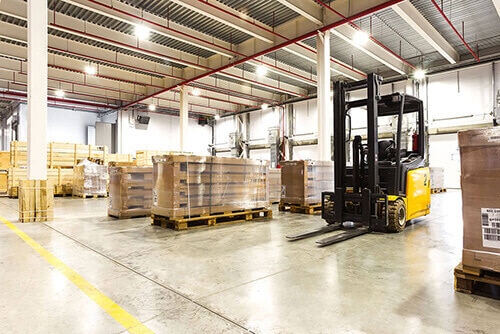
Staying agile
Success in the digital supply chain will be determined more by fostering the right mindset than making the right bet on a particular technology. The key is to take an agile, experimental approach.
The unprecedented pace of change means traditional ways of evaluating technologies are outdated. There simply isn’t the time for a company to carry out a full-scale trial to study how a technology will affect its entire business.
At the same time, sweeping one-off changes to the company’s entire workflow are likely to be too expensive, and too late.
Instead, Agility recommends continuous incremental change – small trials and pilots on a specific part of your process. This allows the trials to be evaluated using real data on the actual impact on your business, rather than based on intuition or hopes for what the technology might one day do.
Successful tries should be scaled up, and monitored carefully as the technology is spread through different parts of your business. But it is also important to be prepared for experiments to fail, and to be able to walk away with small losses. Those failures – and the knowledge of how and why something didn’t work – can then be applied to the next trial.
The success of many technologies will depend on the development of new ecosystems. It’s best to work with trusted partners and other stakeholders to find out how the changes you make affect each other.
There will be no settled end state. We live in an age of continuous innovation. Ever-changing technology means there will always be a need to keep experimenting. Technologies that didn’t have the desired effect when you tried them the first time will need to be looked at again and again, as your processes and the environment you operate in evolves.
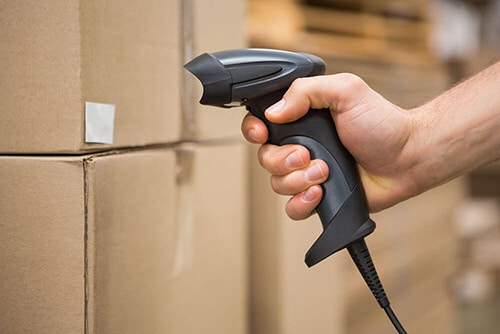
Four Technologies to watch
This is what Agility is doing constantly: working with partners all the way along the supply chain to test how emerging technologies work in the real world.
We currently have a watch list of 16 technologies that are worth keeping an eye on, ranging from machine learning and the cloud to 3D printing, virtual reality, autonomous vehicles and drones.
We have identified four of these that everyone in the supply chain should focus on.
These are already being used to a greater or lesser degree in certain areas of supply and logistics. We believe they will be the foundation of many of the changes likely to sweep through the industry.
They are the BIRD technologies – Blockchain, Internet of Things (IoT), Robotic Process Automation (RPA) and Data Science. Agility has created guides to each of these that help explain how they work, what they can do, and how they can benefit your business.
The BIRD technologies overlap when it comes to how they enhance the way we use data and harness the potential of the digital revolution.
Blockchain establishes trust in data.
Internet of Things provides a vast quantity of relevant data points.
Robotic Process Automation improves the accuracy of data.
Data Science extracts value.
Companies that successfully integrate these four technologies will be in a strong position to take advantage of whatever comes next.
What the future holds
Imagine a product rolling off a production line. From that moment, it is tracked. Its location, tilt, and temperature are securely recorded on an encrypted ledger that cannot be faked. All relevant parties – manufacturer, exporter, shipper, importer, customs official, wholesaler, retailer – have immediate access to the information they need. That information is automatically processed, and there are no errors. The route chosen has been optimized to be cheap, safe, quick, and with the minimum carbon footprint.
Payments can be made immediately with no need for lines of credit. The end recipient knows they are getting exactly what they ordered, delivered in perfect condition. There have been no hold-ups for paperwork, document checks, or delays at port. Lower costs, more satisfied customers, better profit margins.
This is all possible using technology that exists today. Within just a couple of years, it will be common across the industry. With Agility’s help, your business, large or small, can lead the way.
Brazil is the third-largest trucking market in the world after China and the USA, but has historically struggled with poor road freight infrastructure and a supply-and-demand imbalance between freight and trucks.
CargoX, which has been called the Uber of Brazilian trucking, is using big data, machine learning, and the sharing economy concept to radically overhaul the country’s cargo transportation system.
CargoX has built a marketplace via mobile app that connects over 250,000 truckers with shippers moving goods around Brazil. The app reduces costs for shippers, boosts truck drivers’ income, and increases efficiency.
Since it launched three years ago, CargoX has enjoyed massive success, attracting millions of dollars of investment and swiftly dominating the Brazilian trucking market.
We spoke to founder and CEO Federico Vega about the company’s success, and about how machine learning and big data are transforming trucking.
How is CargoX using data and machine learning to improve Brazilian trucking?
We’ve been compiling and analyzing data since 2013, and more than 60% of truckers in Brazil now connect to our app on a monthly basis.
This level of market penetration provides us with an unrivaled level of data, which makes our real-time updates incredibly accurate. The richness of our data, paired with our technology, is what puts CargoX ahead of any competitor and makes our app so effective.
Our machine learning algorithms can calculate where trucks are likely to be at a certain time, solving the problem of 40% to 60% of trucks in Brazil running empty because they can’t find a load. For example, if a truck is in São Paulo now and will be in Rio de Janeiro in a few days, the algorithm can predict this and can match the truck capacity with freight that needs to be transported.
Machine learning can also help to improve safety and decrease the chances of freight theft, which is quite common in Brazil. Data on freight robberies such as location, type of freight, and time of year are used by the machine learning algorithm to calculate ways of lowering the risk.
By using data and machine learning to improve trucking safety and efficiency, we’re making a positive difference for shippers, truckers, and the wider community.
Why do truckers choose to work with CargoX?
We estimate that truckers can earn around 30% more when they work with CargoX because with other carriers they spend a lot of time traveling empty. Our business model ensures that they are always traveling with a full load, so they make more money per kilometer.
It also provides a more efficient, streamlined process for the truckers. On average, truckers in Brazil have to travel 60 kilometers to find loads. With the CargoX app, you can search for a load nearby, and then secure it and pick it up.
We also solve the problem of truckers going unpaid, by conducting credit checks and background checks on the shippers who use our platform. And once a driver has accepted and delivered a load, they’re paid by CargoX, so we guarantee their payment and take some credit risk on their behalf.
And what about the benefits that CargoX provides for shippers?
Once you open a CargoX account, you can post your freight on a web dashboard and then it gets pushed to drivers via the mobile app, along with the pricing. When a trucker accepts the load, they deliver it and get paid.
Our dashboard enables shippers to track and analyze their loads, which is really useful when shippers are moving hundreds or even thousands of loads every month.
CargoX launched in 2016, and has been very successful in a short period of time. What has been the key to your rapid growth, and what advice would you give to other entrepreneurs?
We were in a good position to grow fast without making as many mistakes as competitors because we had the involvement of highly knowledgeable investors like Agility. CEO Tarek Sultan has been excellent at providing advice and pointing us in the right direction. He’s also been able to make valuable introductions to everyone from financial investors to potential clients, and provided information on things we could do here in Brazil that Agility has done elsewhere in the world.
With a board of directors, advisors and investors who go beyond being sources of capital and who really understand your business, you can get ahead of the competition. We are a trucking company, but we’re also a technology company. One of our investors and directors is Oscar Salazar, co-founder and former CTO of Uber, who has the knowledge needed to run the technology side of the business. And then someone like Tarek has deep knowledge of how to run a logistics business, but also has the entrepreneurial expertise, and knows how to rapidly grow a company. And the involvement of Eddie Leshin, the former CMO of US freight marketplace Coyote Logistics, has been invaluable too.
This depth of knowledge and experience really makes a difference when you’re starting and scaling your business, and also commands more investment, as people can see that you have the involvement of people with experience and you’re more likely to thrive.

Head, Agility Ventures
I recently attended a Business Year conference on the role of the private sector in the future of the Kuwaiti economy. The event highlighted Kuwait’s potential to support a vibrant start-up community, but the need was clear for entrepreneurs to capitalize on the country’s digital transformation to drive innovation.
I spoke on a panel alongside entrepreneurs from other well-known Kuwaiti brands including Carriage and Just Clean. There were also insightful contributions from several others, including Kuwait’s Minister of Finance and the Director General of the Kuwait Direct Investment Promotion Authority (KDIPA).
We discussed the fact that while funding for SMEs is critical, a complete eco-system including incubators, talent, laws and other elements must be a part of the wider picture.
I’m encouraged because many of the essential components of a strong knowledge-economy eco-system are coming into place in Kuwait: public and private funding sources, incubators, accelerators and vital sources of mentorship, advice, connections and go-to-market expertise. Kuwait’s legal and regulatory framework is evolving in a positive way.
At Agility, we believe that established companies like ours have a key role to play in supporting SMEs, especially those in the Middle East. We do this both by building products that facilitate SME growth, and by directly providing funding, mentoring and other resources to startups in Kuwait and the broader region.
In March, we brought experts from the MIT Media Lab to Kuwait for the Agility Data Hackathon, a four-day event in which technology students, coders and entrepreneurs competed to solve real world societal and business problems with data and analytics. The idea: to bring together a new generation of Kuwait problem-solvers and encourage development of the collaborative, creative mentality critical to the future of Kuwait and its citizens.
Agility Ventures, our in-house venture capital arm, invests in and advises startups on supply chain ideas and technology. Startups we’ve supported so far include Homoola, a Saudi Arabia company using data analytics and technology to bring new efficiencies to road freight, and CargoX, a Brazilian road freight platform.
We’re also acting as role models, driving our own digital transformation through in-house innovation and investment and the introduction of new products and services. As part of our SME product strategy, we’re investing more than $100 million in Shipa, a new family of tech-enabled freight, e-commerce and delivery services that help small businesses reach international markets. New technologies can streamline the shipping process and make it easier for small businesses to reach overseas markets.
Can Kuwait transform itself into an innovation hub and a private sector-led knowledge economy? The Business Year conference showed that we have the right ingredients for a thriving startup community: funding initiatives, banking structures, connectivity, and well-placed consumers. Now we need to connect the ingredients so they form a healthy, integrated eco-system rather than existing in isolation or as part of fragmented networks. With key stakeholders leading the call for change and entrepreneurs driving innovation, a connected ecosystem will deliver lasting results.
3D printing is big news. It is already a $14.5 billion dollar industry, and is set to keep growing steadily over the next few years. Reports saying it’s now possible to print everything from weapons to an entire house are very eye-catching – and for many businesses and industries potentially alarming.
There’s no doubt that 3D printing, which is also often called “additive manufacturing”, has world-changing disruptive potential, but are we really about to start printing everything we need? Famously, Bill Gates’ mission at Microsoft was to put “A computer in every home”. For the additive manufacturing vanguard, is this about to be updated to “A 3D printer in every home”?
We caught up with Biju Kewalram, Agility’s Chief Digital Officer, to find out the reality of 3D printing, how it is affecting the global supply chain, and what it means for logistics startups.
Is the 3D printing trend really everything it’s made out to be, or is it hype?
There’s no doubt that 3D printing is going to revolutionize global trade at some point – even more than we can currently imagine. However, many projections are over-ambitious about how quickly that impact is going to happen.
When people talk about 3D printing, they tend to imagine whole items which are ready-made, like houses, clothes or food. Additive manufacturing is already being used in a lot of products, but it is often to create prototypes or to assemble small elements of larger products, such as parts, finishings and fittings. These are very useful, but not quite as glamorous!
When it does take off, some futurists talk about every home having its own 3D printer to produce everything they need. Won’t that destroy the logistics industry?
This isn’t a very realistic scenario! 3D printers are already available to buy, but for individual households they are quite expensive and limited in what they can produce, so their uptake has been limited. Some people might start printing certain things at home, but personal printers replacing third party goods altogether is unlikely to ever happen. If it does, there are so many other issues to overcome – like households storing the necessary range of raw materials – that it is still an extremely long way off.
That’s not to say there’s no appeal. My colleague Henadi Al-Saleh and her children had a great experience trying out a 3D printer at home. Her son really loved designing his model and watching it print. There’s clearly something very special and exciting about this technology, but there’s a world of difference between that and it replacing shopping as we know it.
So what’s the real impact of 3D printing for the logistics industry?
It’s crucial to understand that once 3D printing revolutionizes manufacturing – which there’s no doubt it will – there will still be a supply chain. It’s going to transform logistics, not destroy it.
Even with 3D printing as the main method of global manufacturing, the various raw materials needed to print goods will still have to be sourced, moved and stored. Warehouse capacity for hundreds of thousands of printers will be required, and printed goods will have to be transported to their end destination.
Right now, the puzzle of how to reposition the raw material needed for 3D printing at scale still hasn’t been solved. How are you going to get the right amount of raw material in the right place at the right time so you don’t have leftover inventory? 3D printing won’t destroy the supply chain; it will just replace one puzzle with another.
What’s Agility doing in the 3D printing space?
At Agility, we have a stack of 18 technologies we are continuously monitoring for market opportunity, and 3D printing is one of them. We use a defined methodology to assess each technology’s state of readiness, and move when it becomes an attractive opportunity.
At the moment, 3D printing doesn’t fulfill our criteria. We’re waiting for new business models to emerge, but we’re monitoring the technology’s progress and we fully expect it to become attractive in the future. When the time is right, we’ll start moving rapidly through our pilot and partner process.
What does it mean for tech and logistics startups?
It’s certainly nothing to be alarmed about, and there will be exciting opportunities because of this technology in the future. Big logistics players are monitoring the technology and opportunity, and although 3D printing will one day change how goods are manufactured and distributed more than we realize, we are not quite there yet.
Startups developing new ideas and business models in the logistics space certainly shouldn’t be put off by 3D printing. And in lots of areas of tech and manufacturing, 3D printing is already having a big impact – so startups who can harness this momentum can make a real impact.
